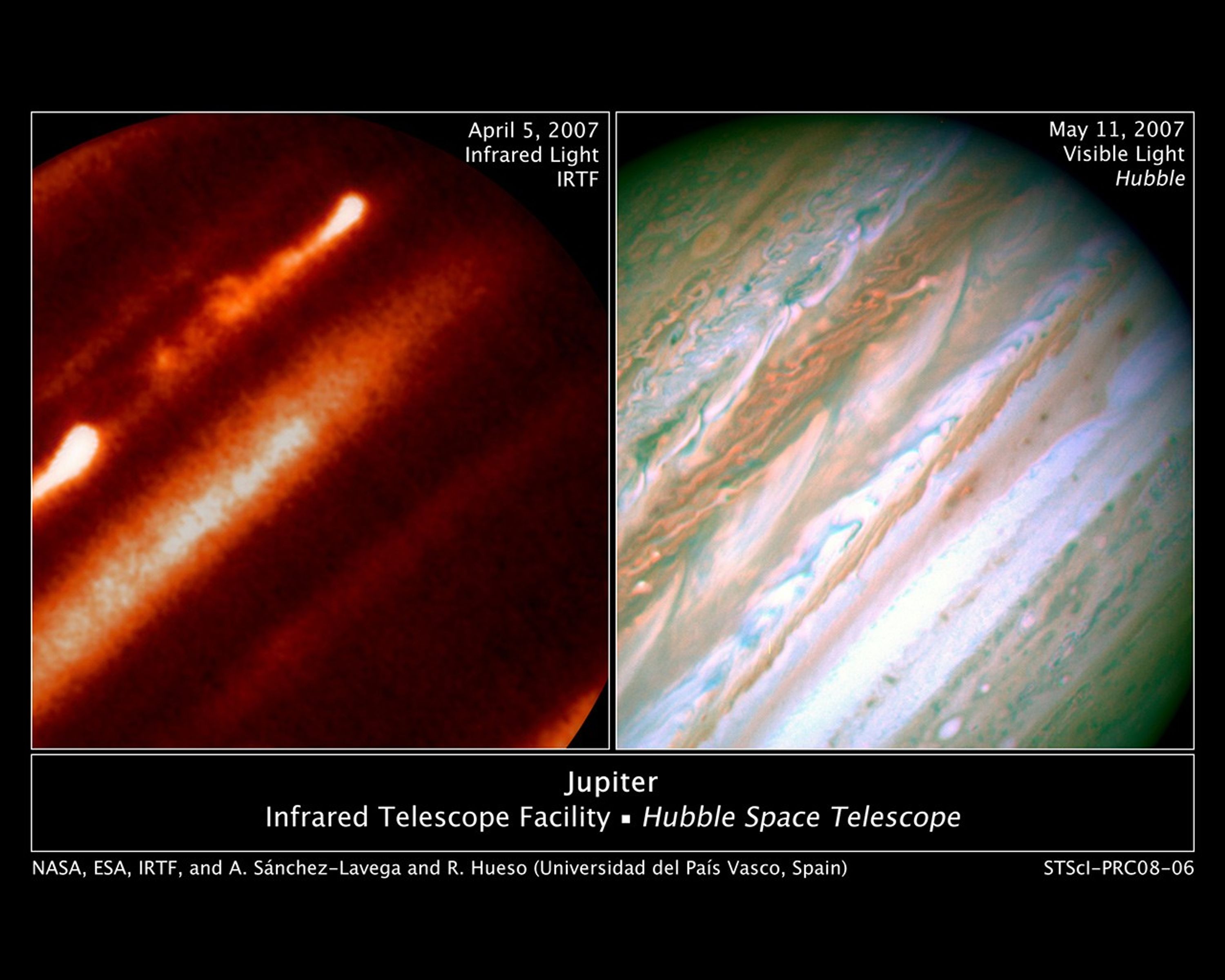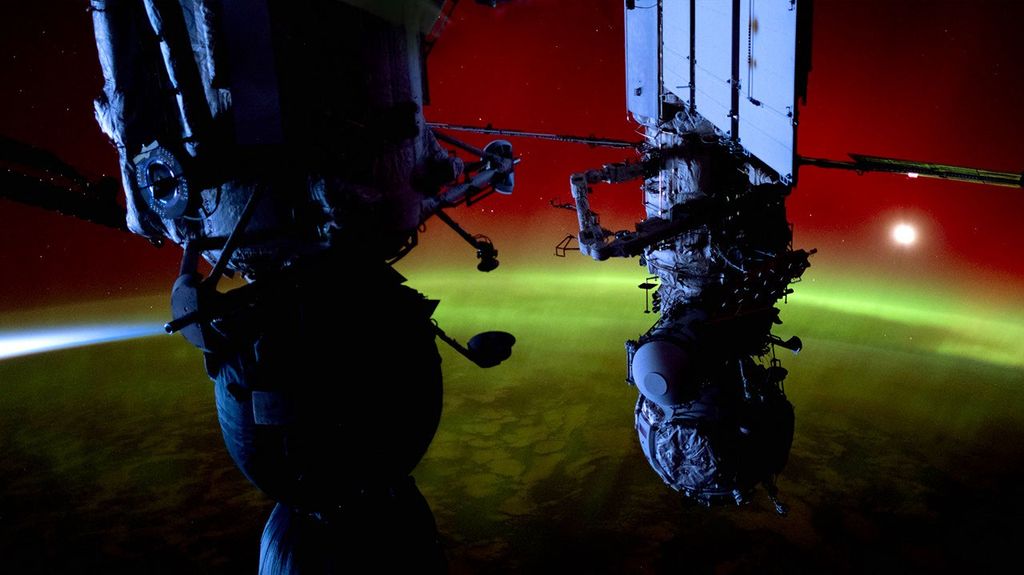1 min read
Internal Heat Drives Jupiter’s Giant Storm Eruption

Detailed analysis of two continent-sized storms that erupted in Jupiter's atmosphere in March 2007 shows that Jupiter's internal heat plays a significant role in generating atmospheric disturbances. Understanding this outbreak could be the key to unlock the mysteries buried in the deep Jovian atmosphere, say astronomers.
Understanding these phenomena is important for Earth's meteorology where storms are present everywhere and jet streams dominate the atmospheric circulation. Jupiter is a natural laboratory where atmospheric scientists study the nature and interplay of the intense jets and severe atmospheric phenomena.
An international team coordinated by Agustin Sánchez-Lavega from the Universidad del País Vasco in Spain presents its findings about this event in the January 24 issue of the journal Nature.
The team monitored the new eruption of cloud activity and its evolution with an unprecedented resolution using NASA's Hubble Space Telescope, the NASA Infrared Telescope Facility in Hawaii, and telescopes in the Canary Islands (Spain). A network of smaller telescopes around the world also supported these observations.
According to the analysis, the bright plumes were storm systems triggered in Jupiter's deep water clouds that moved upward in the atmosphere vigorously and injected a fresh mixture of ammonia ice and water about 20 miles (30 kilometers) above the visible clouds. The storms moved in the peak of a jet stream in Jupiter's atmosphere at 375 miles per hour (600 kilometers per hour). Models of the disturbance indicate that the jet stream extends deep in the buried atmosphere of Jupiter, more than 60 miles (approximately100 kilometers) below the cloud tops where most sunlight is absorbed.
About the Object
- R.A. PositionR.A. PositionRight ascension – analogous to longitude – is one component of an object's position.The semi-major axis of Jupiter's orbit about the Sun is 5.2 Astronomical Units (778 million km or 483 million miles).
- DistanceDistanceThe physical distance from Earth to the astronomical object. Distances within our solar system are usually measured in Astronomical Units (AU). Distances between stars are usually measured in light-years. Interstellar distances can also be measured in parsecs.The planet has a diameter of roughly 88,789 miles (142,984 km) at the equator.
About the Data
- Data DescriptionData DescriptionProposal: A description of the observations, their scientific justification, and the links to the data available in the science archive.
Science Team: The astronomers who planned the observations and analyzed the data. "PI" refers to the Principal Investigator.IRTF Data (left): Other data used in this composite image were taken on April 5, 2007 with the NASA Infrared Telescope Facility (a 3.0 meter telescope at Mauna Kea, Hawaii). The image was taken through a medium-band filter centered at 2.3 microns; six exposures of 1 second each were taken with the NSFCam2 instrument. HST Data (right): HST Proposal: 10782 I. de Pater, M. Wong, P. Marcus, and X. Asay-Davis (University of California, Berkeley). - InstrumentInstrumentThe science instrument used to produce the data.IRTF>NSFCam2 (left) and HST>WFPC2 (right)
- Exposure DatesExposure DatesThe date(s) that the telescope made its observations and the total exposure time.April 5, 2007 (left) and May 11, 2007 (right)
- FiltersFiltersThe camera filters that were used in the science observations.NSFCam2 (left): 2.3 microns WFPC2 (right): 410 nm, 502 nm, and 673 nm
- Object NameObject NameA name or catalog number that astronomers use to identify an astronomical object.Jupiter
- Object DescriptionObject DescriptionThe type of astronomical object.Planet
- Release DateJanuary 23, 2008
- Science ReleaseInternal Heat Drives Jupiter’s Giant Storm Eruption
- Credit

WFPC2 (right): Blue: F410 nm Green: F502 nm Red: F673 nm
Related Images & Videos

Hubble/IRTF Composite Image of Jupiter Storms
The background image is from Hubble Space Telescope and shows the turbulent pattern generated by the two plumes on May 11, 2007 (upper left part of Jupiter). The two bright plumes detach in the superimposed small infrared image obtained at the NASA-IRTF facility a month before,...
Share
Details
Claire Andreoli
NASA’s Goddard Space Flight Center
Greenbelt, Maryland
claire.andreoli@nasa.gov

































